Different Types of Panthers in the World


The term ‘panther’ is not always a strict scientific term. While it is used to describe the big cat species which encompass the genus Panthera, it is also used to cover animals with similar characteristics such as certain types of cougar. There are also significant types of panther which are classified according to other descriptors, the black panther being a notable example. At AnimalWised, we look at the different types of panthers in the world according to the strict taxonomic classification. We share their characteristics, distribution and photos.
Jaguar (Panthera onca)
While all members of the genus Panthera can be considered panthers, not all are commonly referred to as such. If we use this descriptor, the jaguar may be the first animal that comes to mind.
The jaguar is one of the most powerful types of panther, being found primarily in Central and South America. Jaguars are known for their imposing size, extremely strong jaws and ability to hunt large prey such as deer, tapirs and caimans. A male can weigh between 123-212 lb (56-96 kg), although some can reach up to 264 lb (120 kg). Females are smaller, averaging 99-176 lb (45-80 kg).
The jaguar's coat is generally golden yellow with black rosette-shaped spots. These markings provide excellent camouflage in the tropical forests which make up its habitat. Some specimens have a genetic mutation that produces an excess of dark pigment in the coat, resulting in the existence of black jaguars. All jaguar species are endangered due to habitat destruction and illegal hunting, but it is still distributed in a wide range of ecosystems, from forests to semi-arid areas.
Learn more about the distribution of these animals with our article asking where do jaguars live in the world?
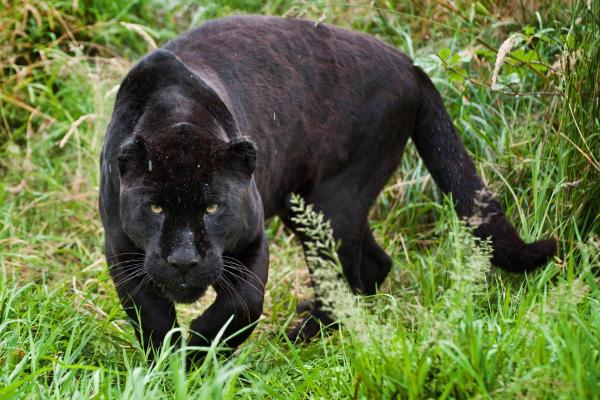
Leopard (Panthera pardus)
The leopard is a medium to large-sized felid with golden fur and black spots. It lives mainly in Africa and some areas of Asia such as India and China. Its natural habitats includes jungles, savannas and mountains. As with the previous type of panther species, a minority of specimens are born with the same genetic mutation that gives rise to black leopards.
Leopards and jaguars are the only two types of panther which can develop true melanism. This means they are the only big cat species which constitute the different types of black panther.
An excellent solitary hunter, the leopard is known for its agility and ability to climb trees. They are even known to store prey away from other predators and scavengers. Its body is muscular and flexible. It has fur that provides effective camouflage in its surroundings. Males can weigh up to 198 lb (90 kg), while females are smaller.
Although they only constitute one species, this type of panther has various subspecies according to different geographic populations. Learn more in our guide to the different types of leopard.
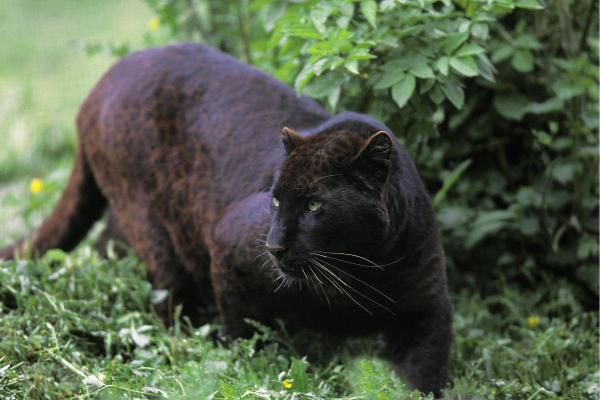
Snow leopard (Panthera uncia)
Although sharing a common name with the previous entry on our list of the different types of panthers in the world, the snow leopard is a distinct species in the Panthera genus. Sometimes known as the snow panther, the snow leopard inhabits the mountainous regions of Central Asia, including the Himalayan mountain range.
This large feline is distinguished from the other types of panthers by its silver-gray fur, marked with black spots. This helps it to camouflage perfectly in the snowy and rocky environments in which it lives. They are lighter than other large cats, with males weighing between 77-121 lb (35-55 kg) and females between 60-93 lb (27-42 kg).
Unlike other types of panthers, the snow leopard has a long, bushy tail. Although not shown in the photo below, this not only serves to provide balance while moving across steep terrain, but also to protect itself from extreme cold by wrapping the tail around its body. This animal is a solitary hunter, specializing in hunting mountain mammals such as the snow goat and deer. It is an endangered species, mainly due to poaching and habitat loss.
Learn more about why the snow leopard is endangered with our related article.
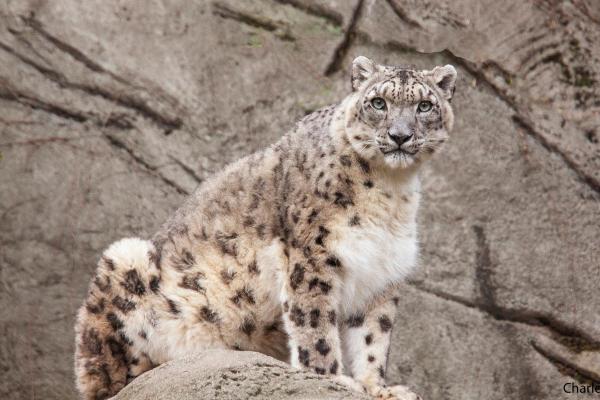
Tiger (Panthera tigris)
Another animal that is part of the Panthera genus is the tiger. This is one of the largest felines in the world and lives mainly in Asia. It is found in a variety of habitats, from tropical jungles to cold forests and even snowy regions.
There are several types of tiger subspecies, such as the Bengal tiger, Siberian tiger and Indochinese tiger, among others. Although they all share a similar physical build, each subspecies has its own adaptations to the specific environment in which it lives. The photo below depicts as Bengal tiger.
All the different types of tiger are known for their powerful musculature, distinctive stripes and solitary behavior. They are a hunter of large prey such as deer, wild boar and even large buffalo in some cases. Males weigh between 198-661 lb (90-300 kg), depending on the subspecies. Bengal and Siberian tigers are the heaviest. Females weigh between 143-368 lb (65-167 kg).
Learn the differences between the Siberian and Bengal tiger in our related guide.
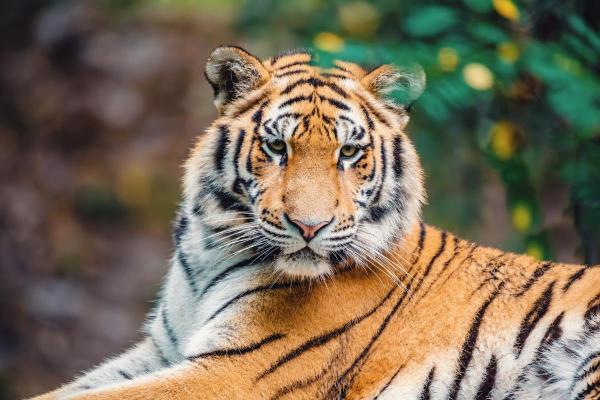
Lion (Panthera leo)
We finish our list of the different types of panthers in the world with the lion. Known colloquially as the king of the jungle, the lion does not consider the jungle its natural habitat. It lives mainly in sub-Saharan Africa and in a small region of India, preferring savannahs and open areas. As seen in the photo, males are known for their impressive mane of hair and their social groups encompass a tightly enforced order.
Males can weigh up to 551 lb (250 kg). Although female lions are smaller, they are the main hunters in the group. Lions hunt by catching prey and bringing it back for the rest of the pride to eat. Unlike other solitary panthers, lions organize their lives in packs. These consist of females, their cubs and some males, something which makes hunting and defending their territory easier.
As with some of the other different types of panthers, lions have certain subspecies according to separate populations. You can learn more with our article asking how many types of lions are there?
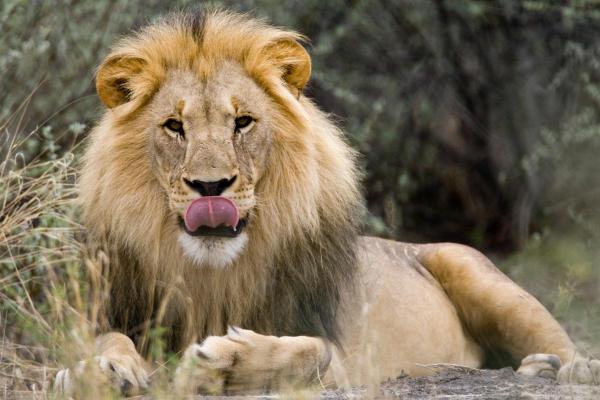
What other cats are known as a panther?
While the members of the Panthera genus are taxonomically the only types of panther in the world, there are some felid species which are colloquially known as panthers. This is mainly used for different types of cougars (Puma concolor), although their nomenclature can change drastically according to region. Historically, North American cougars of the eastern US have been called ‘panthers’ although this is now less common.
Certain subspecies of the different types of cougar may also be known as panthers. Perhaps the most notable example is the Florida panther (Puma concolor couguar). This cat is distinct from other types of cougars due to its genetic isolation in the southeastern US. This isolation has contributed to their dwindling population numbers, among other factors.
If you want to read similar articles to Different Types of Panthers in the World, we recommend you visit our Facts about the animal kingdom category.
- Jacobson, A. P., Gerngross, P., Lemeris Jr., J. R., Schoonover, R. F., Anco, C., Breitenmoser-Würsten, C., ... & Dollar, L. (2016). Leopard (Panthera pardus) status, distribution, and the research efforts across its range. PeerJ, 4, e1974.
https://doi.org/10.7717/peerj.1974 - Jędrzejewski, W., Robinson, H. S., Abarca, M., Zeller, K. A., Velasquez, G., Paemelaere, E. A. D., ... & Quigley, H. (2018). Estimating large carnivore populations at global scale based on spatial predictions of density and distribution: Application to the jaguar (Panthera onca). PLOS ONE, 13(3), e0194719.
https://doi.org/10.1371/journal.pone.0194719 - Kitchener, A. C., & Dugmore, A. J. (2000). Biogeographical change in the tiger, Panthera tigris. Animal Conservation, 3(2), 113–124.
https://doi.org/10.1017/S1367943000003201 - Lyngdoh, S., Shrotriya, S., Goyal, S. P., Clements, H., Hayward, M. W., & Habib, B. (2014). Prey preferences of the snow leopard (Panthera uncia): Regional dietary specificity holds global significance for conservation. PLOS ONE, 9(2), e88349.
https://doi.org/10.1371/journal.pone.0088349 - Nagel, D., Hilsberg, S., Benesch, A., & Scholz, J. (2003). Functional morphology and fur patterns in recent and fossil Panthera species. Scripta Geologica, 126, 227–240.
- Yamaguchi, N., Cooper, A., Werdelin, L., & Macdonald, D. W. (2004). Evolution of the mane and group-living in the lion (Panthera leo): A review. Journal of Zoology, 263(4), 329–342.
https://doi.org/10.1017/S0952836904005242










